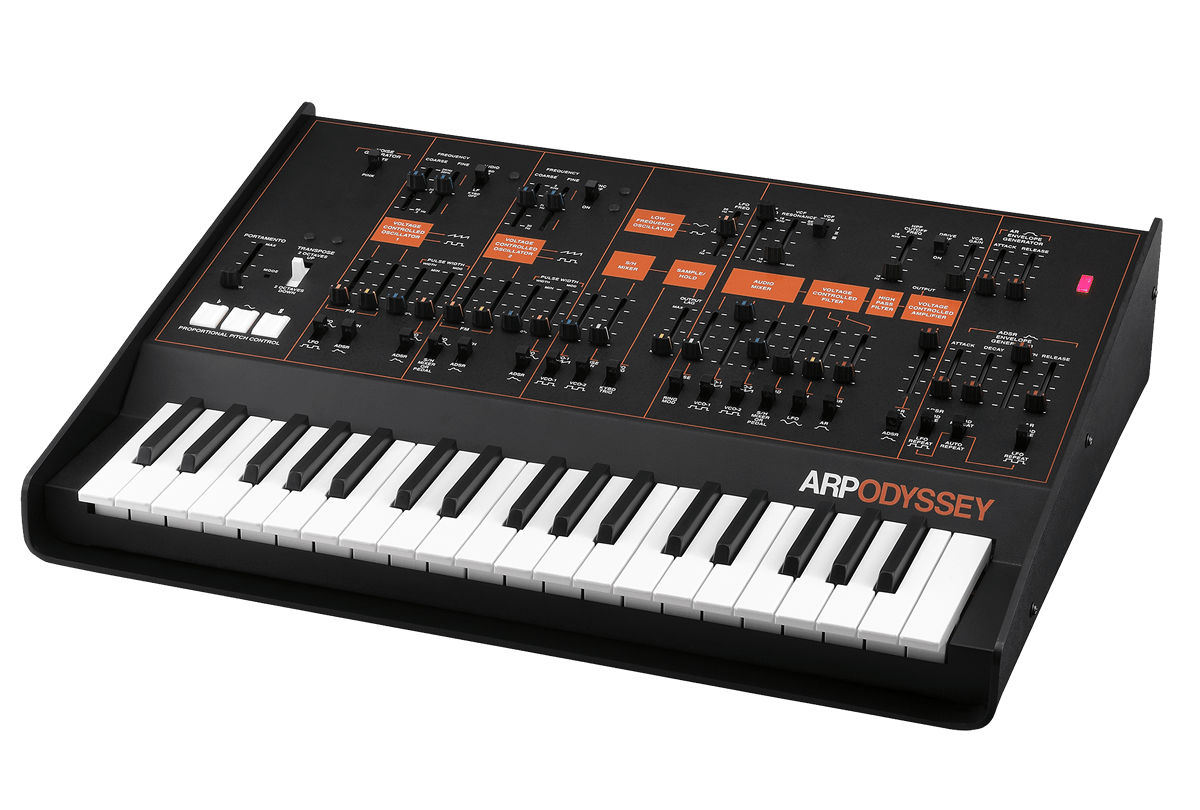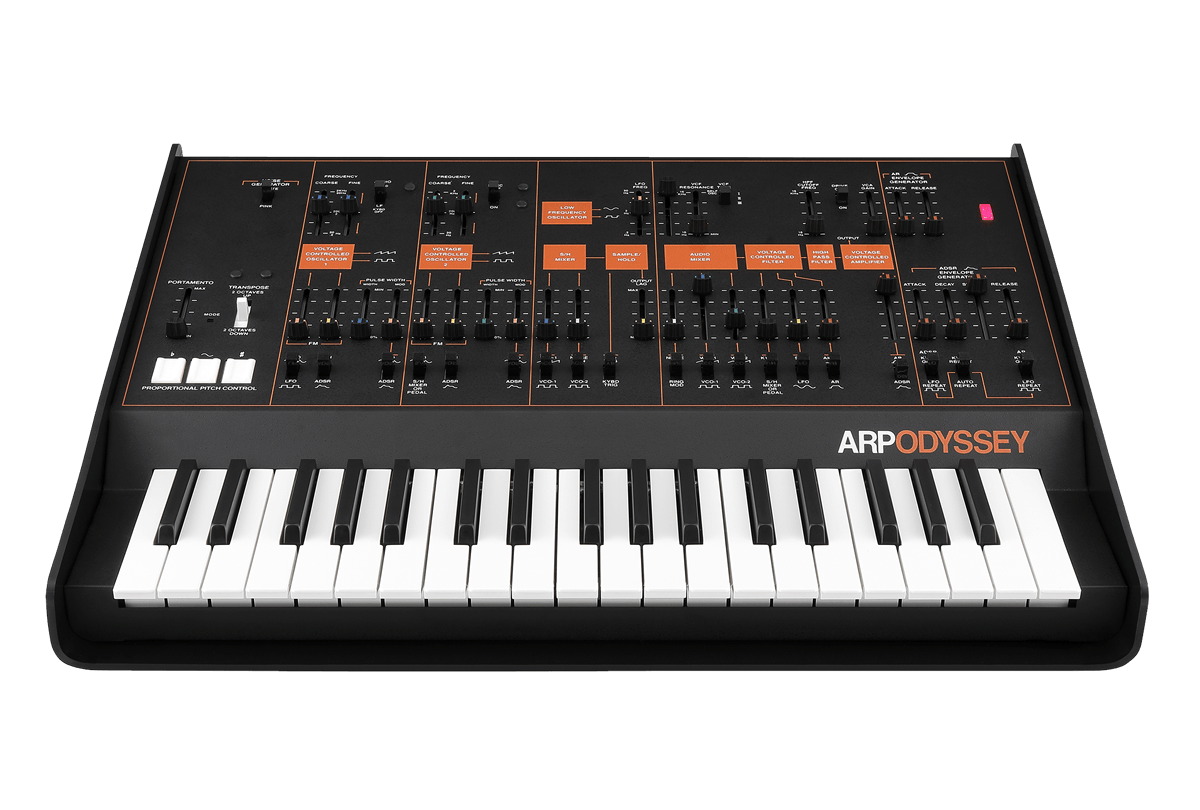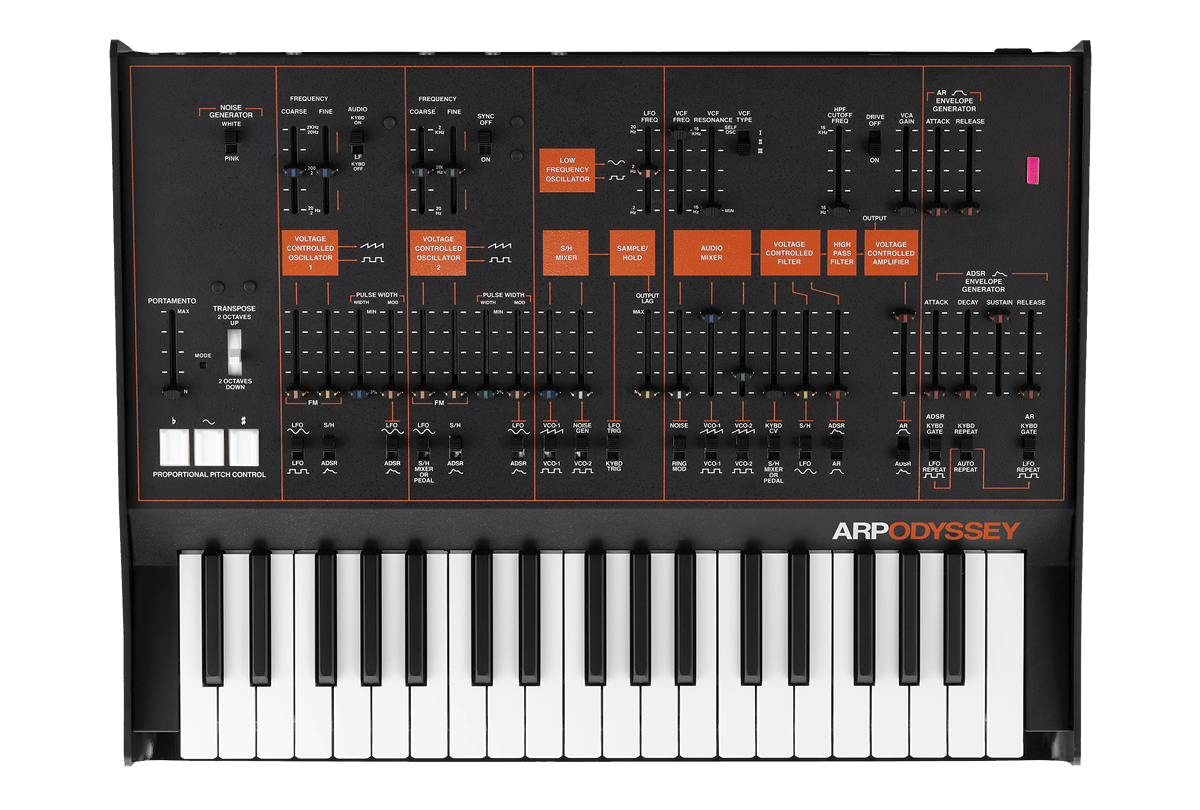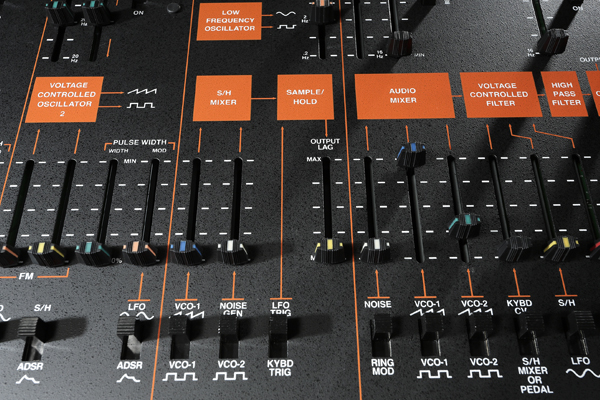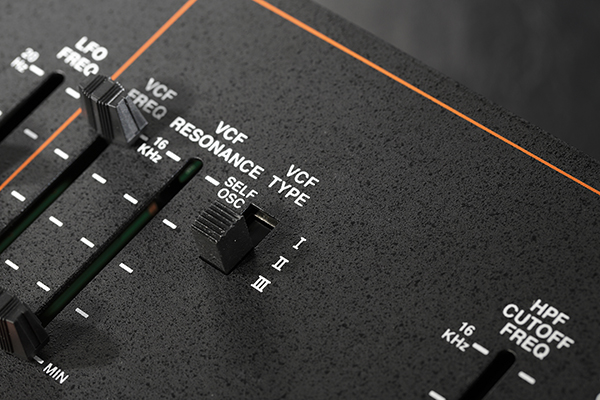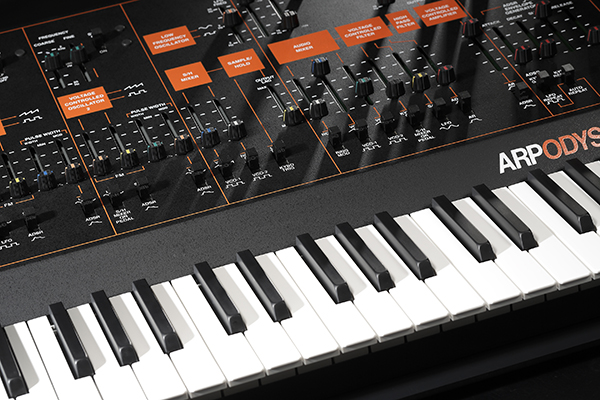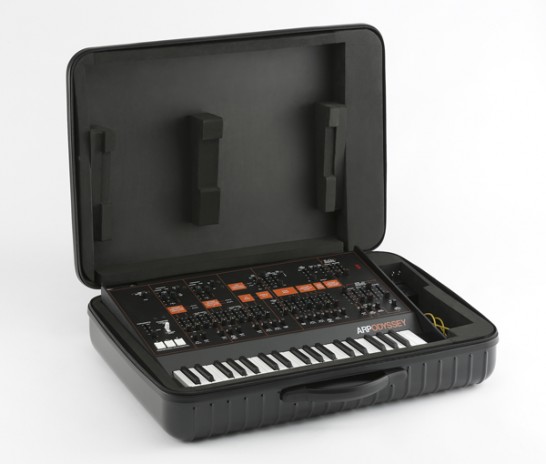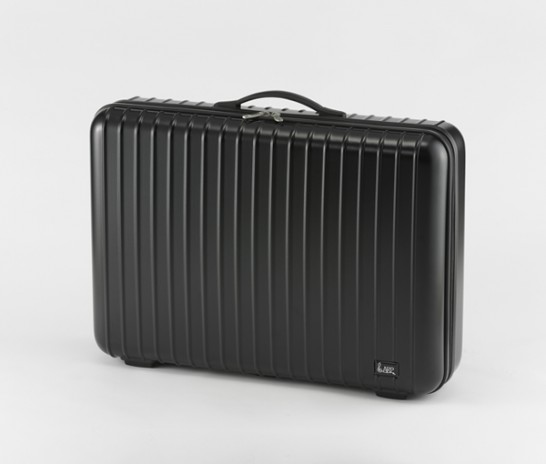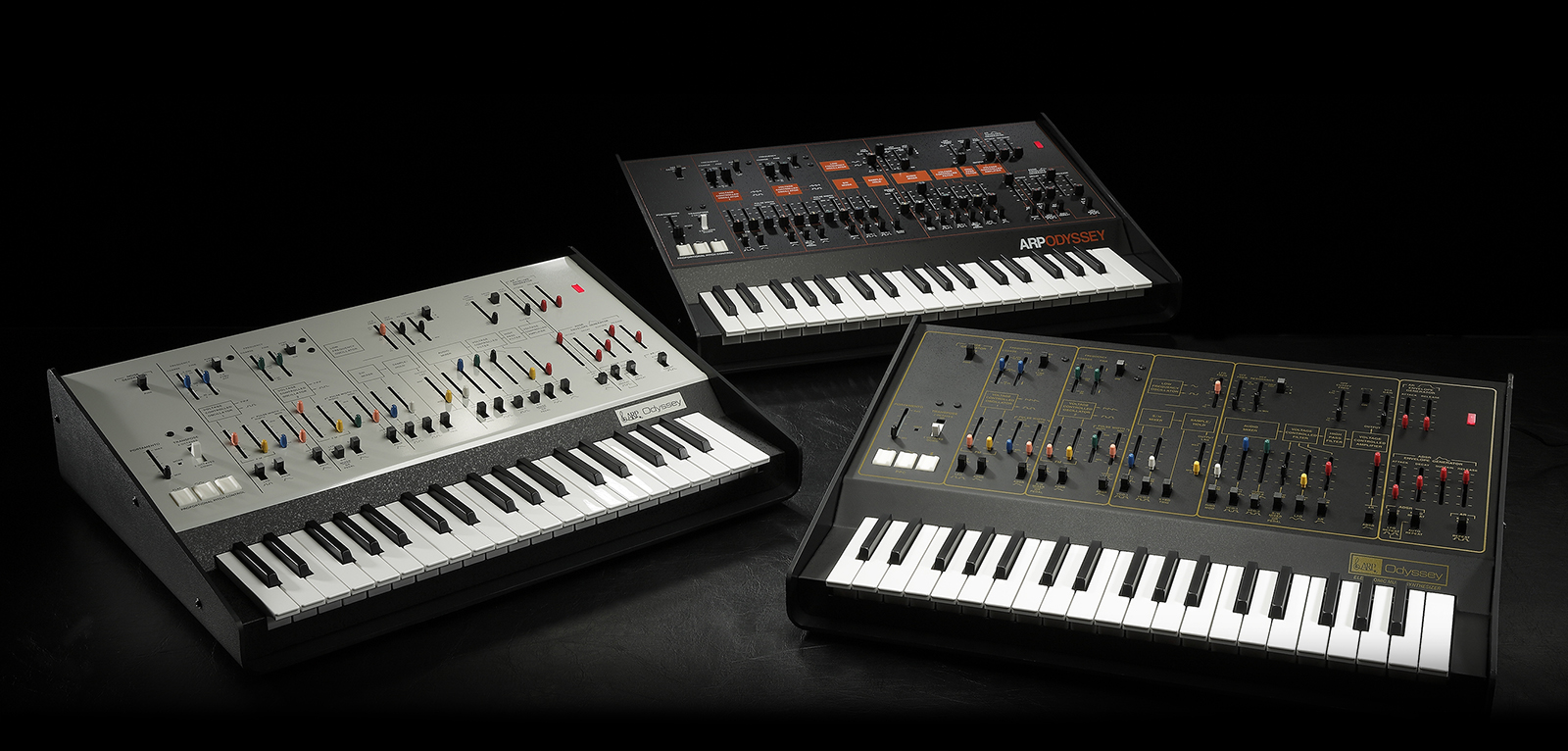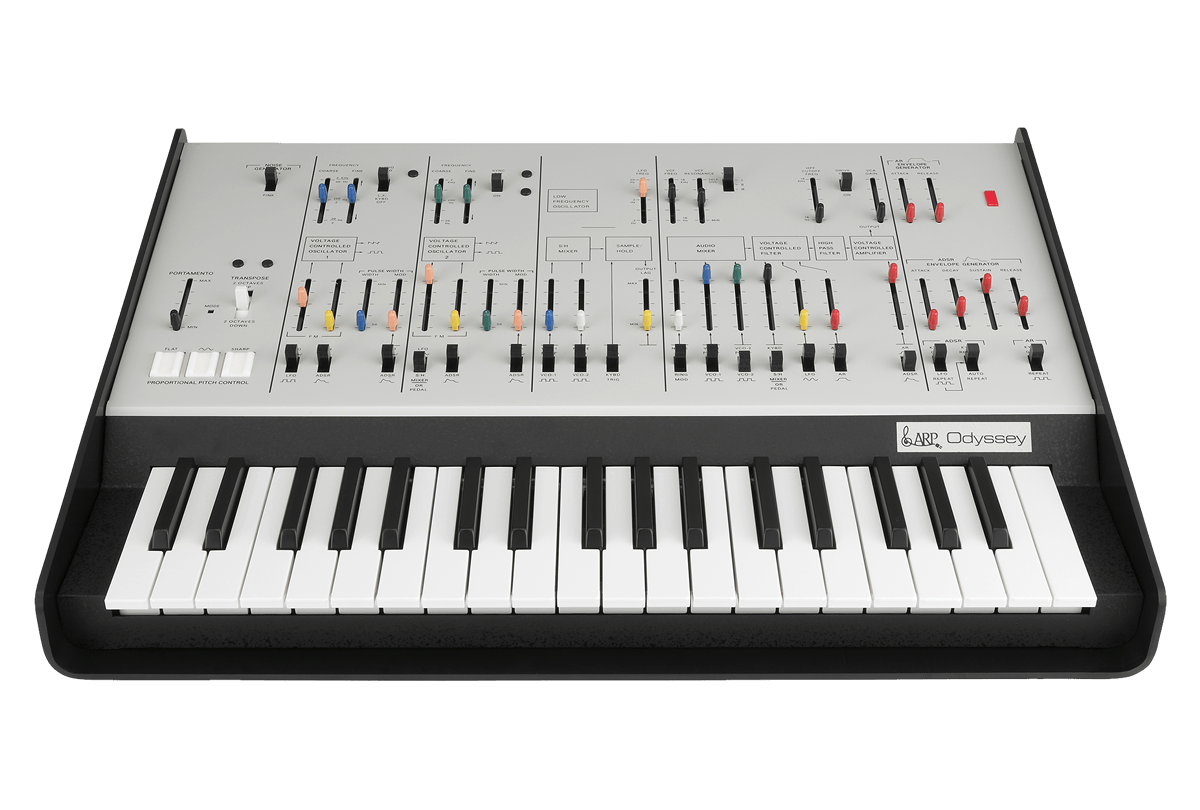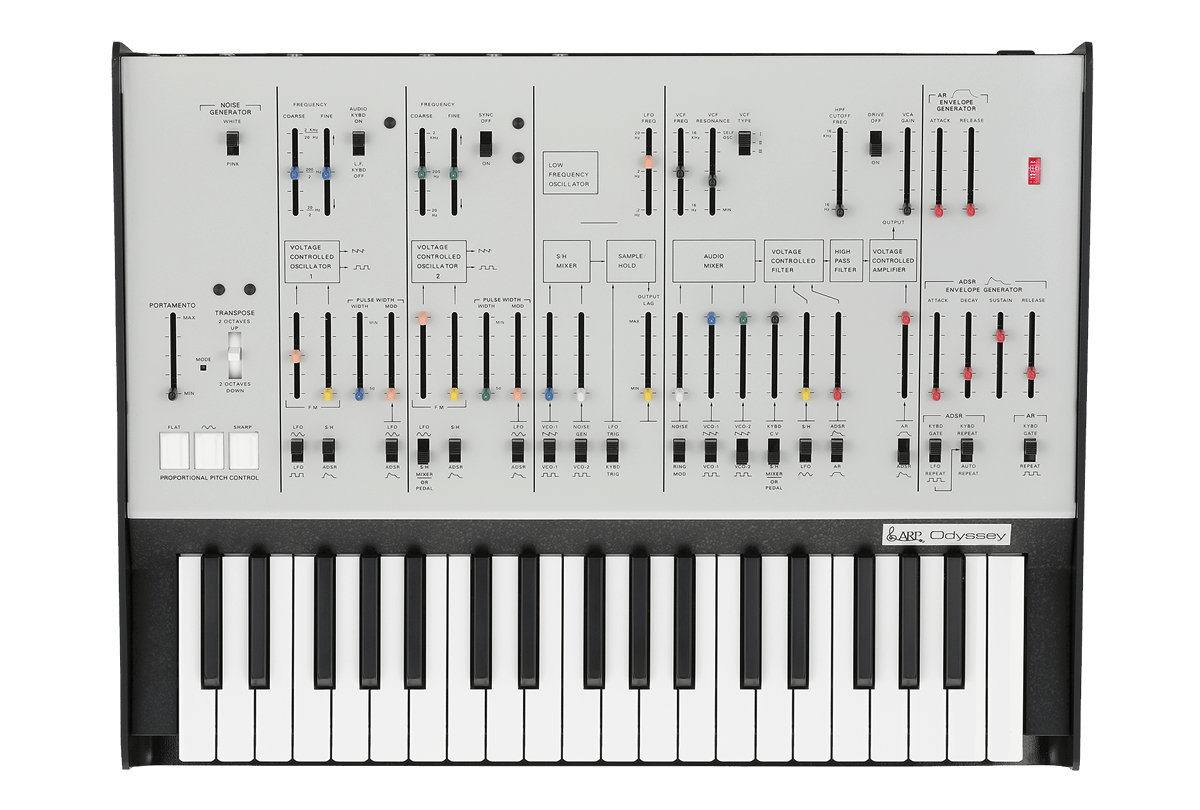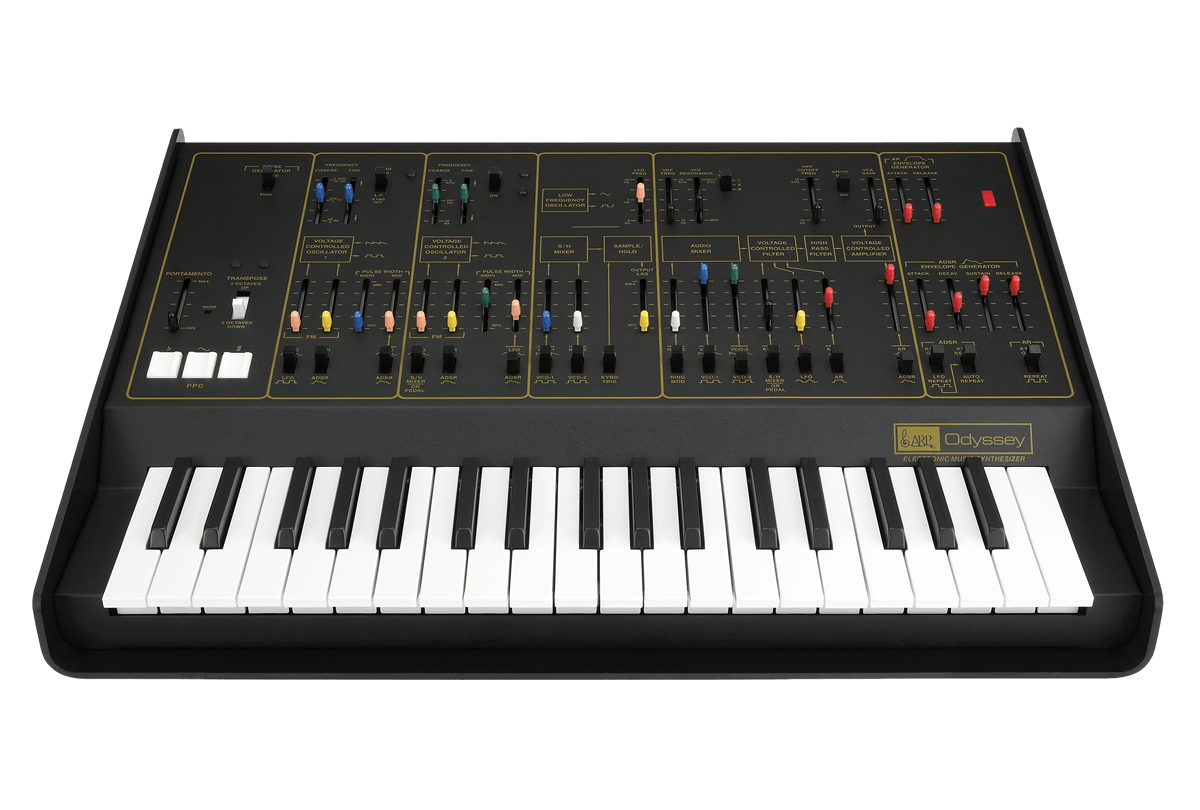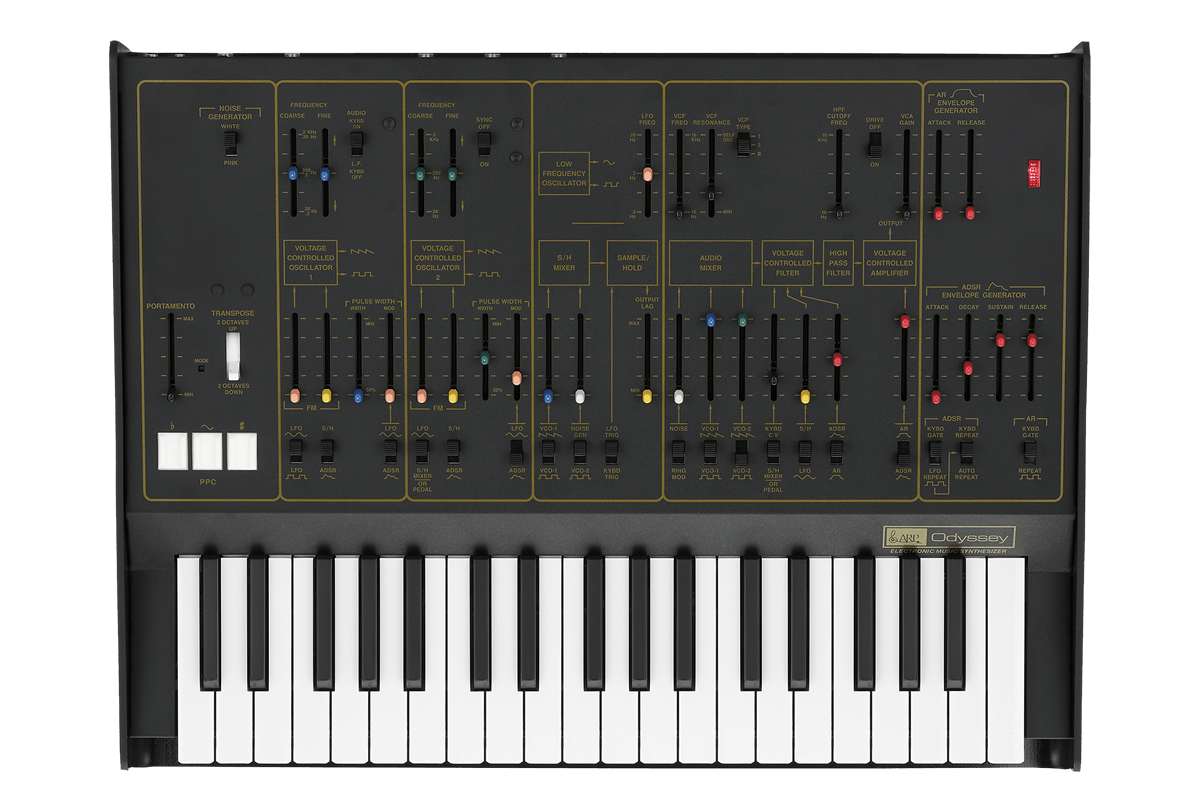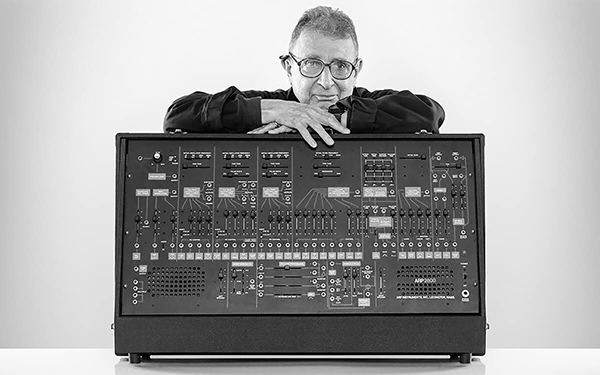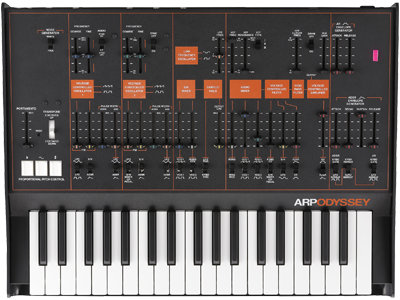Forty years later, a complete revival.
The legendary analog synthesizer that transformed its age.
The ARP Odyssey was an analog synthesizer originally produced in 1972 by the American manufacturer ARP Instruments, Inc. that quickly garnered a faithful following among musicians. Well respected for its high value, ease to play and portability, the ARP Odyssey had undergone several improvements during its history and continued to be a long-seller until manufacturing stopped in 1981 due to economic hardships and the digital surge. Loved by a wide range of musicians as a historical classic, its sound can be heard on numerous classic songs.
Now in 2015, KORG has brought back the ARP Odyssey for today. With the advisory assistance of David Friend, the co-founder of ARP Instruments, KORG has completely reproduced the original circuitry for artists looking to recreate classic sounds and explore new ones. Together the engineers at KORG and Arp were able to nail the sound and feel of the original. Every detail has been carefully considered to stay true to the quality of the original, down to the sophisticated semi-hard case.
The legendary ARP sound is loved to this day. Long stopped, the wheels of history have again begun to move.

